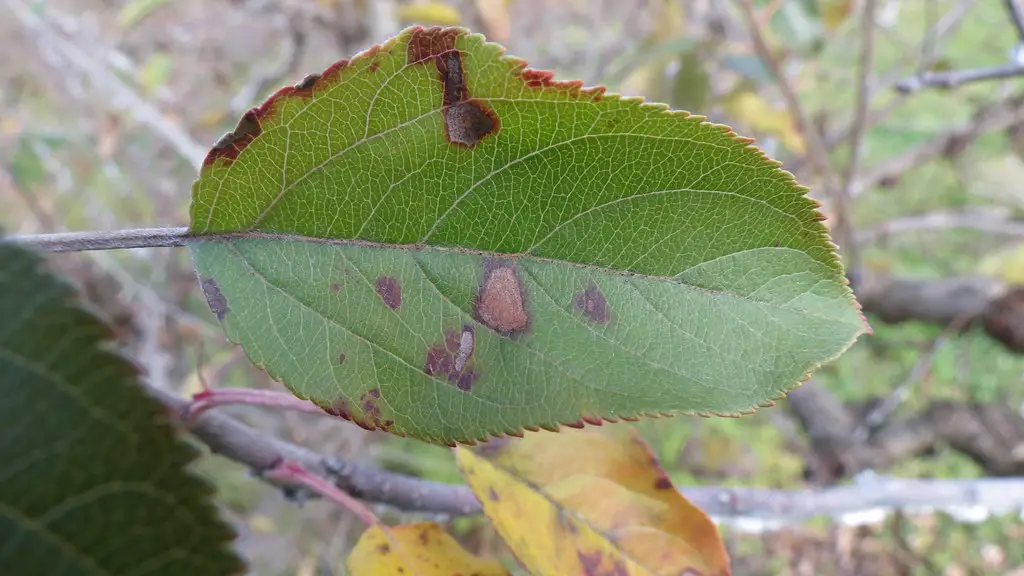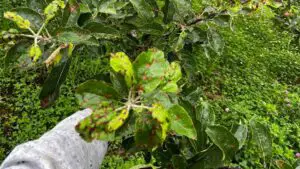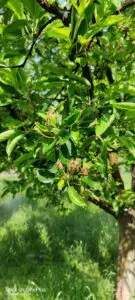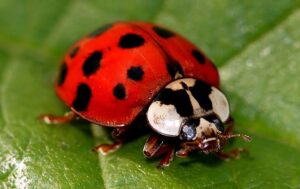Alternaria is a genus of fungi that includes several species capable of causing diseases in plants. The most common species affecting apples is Alternaria alternata. This fungal pathogen can cause a disease known as Alternaria blotch or Alternaria leaf spot.
Alternaria blotch primarily affects the leaves, but it can also infect the fruits of apple trees. The disease initially appears as small, dark brown or black spots on the leaves. Over time, these spots may enlarge and coalesce, leading to the yellowing and wilting of the affected leaves. If the disease spreads to the fruit, it can cause dark, sunken lesions.

Symptoms of Alternaria Disease
The symptoms of Alternaria disease can vary depending on the part of the apple tree that is infected.
- Leaf spots: Leaf spots are small, dark brown to black lesions that can appear on the leaves of apple trees. The spots can be circular or irregular in shape, and they may be surrounded by a yellow halo.
- Fruit rot: Fruit rot is a serious infection that can cause the fruit to rot and fall from the tree. The rot typically starts as small, brown spots on the skin of the fruit. The spots can then enlarge and spread, and the fruit may become soft and mushy.
- Core rot: Core rot is a less common infection that affects the core of the apple. The rot typically starts as a small, brown spot in the core of the apple. The spot can then enlarge and spread, and the core may become soft and mushy.
Causes of Alternaria Disease
The fungus that causes Alternaria disease is a common soil fungus. The fungus can survive in the soil for long periods of time. The fungus can also be spread by wind, rain, and insects.
- Alternaria disease is more common in warm, humid climates.
- The fungus that causes Alternaria disease can also infect other plants, such as peaches, pears, and tomatoes.
Prevention of Alternaria Disease
There are a number of things that can be done to prevent Alternaria disease, including:
- Plant apple trees in a well-drained area.
- Avoid planting apple trees in areas where the soil is known to be contaminated with the Alternaria fungus.
- Prune apple trees regularly to remove dead, diseased, or crossing branches.
- Apply fungicides to apple trees as a preventive measure.
- There are a number of fungicides that can be used to treat Alternaria disease. However, it is important to rotate fungicides to prevent the fungus from developing resistance
Treatment of Alternaria Disease
If Alternaria disease is detected, it is important to treat the infection promptly. Treatment options include:
- Pruning away infected leaves and branches.
- Applying fungicides to the leaves and fruit of the apple tree.
- Removing fallen fruit from the ground.
Controlling Alternaria Disease
There are a number of things that can be done to control Alternaria disease, including:
- Practicing good sanitation by removing fallen fruit and debris from the orchard.
- Rotating apple varieties with different susceptibility to Alternaria.
- Using resistant rootstocks.
- Applying fungicides when necessary.
By following these tips, you can help to reduce the incidence of Alternaria disease in your apple orchard.



